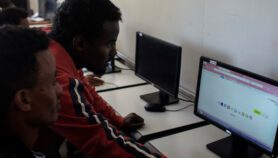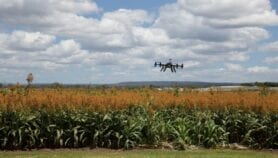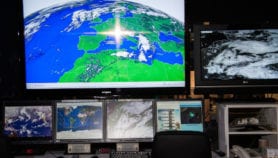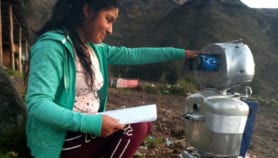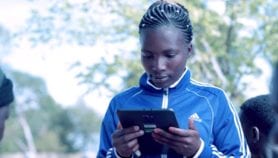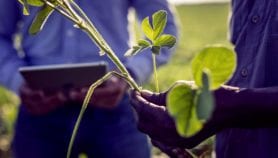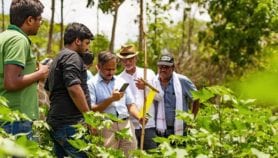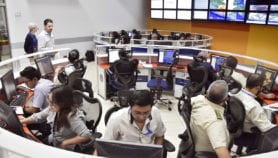By: Kaz Janowski
Send to a friend
The details you provide on this page will not be used to send unsolicited email, and will not be sold to a 3rd party. See privacy policy.
Offering more images, audio and video will entice new readers to science-related development stories that they might otherwise overlook.
The tranquillity of SciDev.Net’s London office was disturbed last week by the arrival of a large cardboard box and a question addressed to all present — "Where would you like it?" — from the gentleman manoeuvring the box to the centre of the room.
Once unpacked, the ‘it’ turned out to be a gleaming new Mac, complete with a tiny white keypad and mouse — the multimedia shape of things to come.
SPEED READ
- Development news stories often lack visual impact
- Most successful websites make full use of images and video
- Through multimedia we can make science and development stories more compelling
As the new Editor, I pondered the seductive allure of new technology and lamented that my own arrival in the office a few days earlier had attracted far less attention and admiration than the Mac’s.
Three questions came to mind: what will multimedia add to SciDev.Net’s coverage of science and development stories; what challenges will it pose; and, a cheeky last one, why has it taken SciDev.Net 12 years to start producing multimedia content?
Putting users in charge
Multimedia stories, as the name suggests, offer a rich and complementary mix of text, photographs, video, audio, graphics and interactive elements on a website. Users can experience the information coming through each medium in a non-linear way, so, rather than having to follow a rigid linear structure, they are invited to move around the site at leisure.
Nick Ishmael Perkins, director of SciDev.Net, says that this will give readers new ways to access comment and analysis on research, evidence and innovations. "Multimedia," he says, "allows us to keep pace with our readers’ preferences". On a recent visit to Egypt, Nick was repeatedly reminded that the most successful websites in the region were the ones making full use of images and video.
As the digital revolution sweeps the globe, it is becoming ever clearer that ‘readers’ want to become multimedia consumers of information. They enjoy a mix of media, relishing the fact that information can be more visual and does not have to stay still.
In recent years, science reporting has kept pace with the public appetite for the visual. Science stories generate striking images that are magnets to the eyes, attracting readers who might otherwise have shunned their content.
The same, unfortunately, cannot always be said for development stories in the news. But multimedia stories can change that precisely because they draw users in, make content easier to understand and engage the user emotionally.
Science and development
I have found, from my work in radio, that science and development stories can complement each other and benefit from multimedia retelling if they explore individual human stories.
In the late 1990s, I worked on a UK radio series called In the Field with the Natural Resources Institute of the University of Greenwich, London, which was broadcast on the BBC World Service in 2001. The series looked at the relationship between scientific research and human livelihoods.
Scientists working on development projects wanted to disseminate their findings to an audience beyond the usual academic publications. The team’s starting point was always to get the scientists to explain in simple terms what their work involved, who benefited from it and why anyone should want to know about it.
Within the radio programmes, we moved away from presenting factual information in a linear way. We enriched the listener experience by providing a wide range of voices and used ambient sounds to evoke a sense of location. We created a supporting website that had links to the audio of each radio programme along with text and images, and produced printed support notes for the series. [1]
For me, this is the essence of multimedia production: it requires an issue to be thought about in a non-linear way.
The pioneering In the Field project made me realise that, with a little imagination, multimedia stories can emerge from the most unlikely starting materials. This makes them both challenging and exciting. The lives of ordinary people, as well as the work of scientists and development professionals, can become accessible and compelling.
The challenges ahead
Of course, technology has moved on since then, but the challenges of producing multimedia content remain the same.
For SciDev.Net, the first challenge is about acquiring the right skills, equipment and software, says Nick. "None of this is especially difficult, but it does mean extra investment for a charity that has built its reputation on quality journalism for low bandwidth countries."
"The second challenge," he says, "is to draw on the democratisation of journalistic practice that multimedia tools like smartphones offer, without compromising our reputation for accuracy and trustworthiness on science. We don’t want to dumb down, just open up."
But why has it taken 12 years for SciDev.Net to move into multimedia? When the organisation was born, its funders felt the time was right for a web-based science and development news site even though most people in the global South couldn’t access it (as connectivity was an issue).
"We now see an opportunity to define media convergence on our own terms," says Nick. "Our aim is to tell stories in a way that won’t compete with other media but which supports them and, in fact, offers them some of the richness of journalism for science and technology. After all, our creative commons licensing actively encourages content sharing."
We feel we are on the brink of something really exciting at SciDev.Net — and that the new Mac will soon be a key player in our global content-sharing future. As our Latin American and Caribbean editor, Luisa Massarani, puts it: "We have a lot to learn about multimedia production. But it’s really cool!"
Kaz Janowski
Editor, SciDev.Net
References
[1] In the Field (BBC World Service, accessed 2013)



